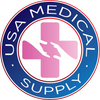Vinyl, nitrile, and latex. Wondering what is unique about these gloves? This article will show you what sets them apart from each other.
Gloves are made from different materials. A glove's material determines its strength and purpose or use. This being so, you will find that all these glove types (vinyl, nitrile, and latex) are suitable for different purposes.
Ordering the wrong kind of gloves can lead to glove inefficiency and wastage of money. For example, a vinyl glove offers inadequate protection against chemicals and viruses.
With this in mind, manufacturers have come up with more glove types to safeguard your hands in all situations. Nitrile, latex, and vinyl are the usual suspects when it comes to disposable glove options.
Please read below about their unique qualities and find out which suits you best.
Nitrile Gloves
Nitrile gloves are the popular choice across all industries. When it comes to hazardous or corrosive chemicals, nitrile offers the most protection compared to latex and vinyl. These gloves are also superior in strength, dexterity and highly resistant to oils and punctures.
Nitrile gloves are made from a synthetic type of rubber called nitrile-butadiene that prevents latex allergies. This makes nitrile gloves the safest choice for everyone. Buy 100% nitrile gloves that are free of powder, plasticizer, silicone oil, and ester.
Why are Nitrile gloves so popular?
They are the strongest and safest gloves on the market (Have a high resistance to tear/ puncture)
Nitrile gloves protect your hands from everyday contamination and substances like oil, grease, chemical burns, liquids, solvents, and some acids or bases (to some extent).
They are latex-free
They dissipate heat very fast.
They are waterproof
They offer high resistance to chemicals and blood-borne pathogens
They are durable (can be reused)
They are comfortable and fit well
They are affordable
They are affordable
Where do you use Nitrile disposable gloves?
Because of these reasons, nitrile gloves have become the most popular glove choice. They are widely used in medicine (health/medical professionals), the automotive industry, and tattoo shops, and everywhere else.
Latex Gloves
Latex gloves were the superpower of gloves until the new kid on the block (nitrile) took the spotlight.
Latex is tested and tried. That is why it is still relevant to date. From the days when HIV was discovered, latex gloves were the doctors’ trusted ally. Medical professionals wore latex gloves to prevent contraction/transmission of blood-borne diseases like HIV/ AIDS. Latex offered (and still does) excellent protection.
Latex gloves are from natural rubber. This means that it contains high levels of proteins that cause allergic reactions to some people. Latex allergies led to the development of latex-free disposable gloves. And that is how allergic-free vinyl and nitrile came into existence.
Compared to their counterparts, latex gloves are the most comfortable disposable gloves you can get. Made from natural rubber, they are resistant to puncture and tear. Latex is also waterproof because the manufacturers can easily control the number of micro holes in the rubber.
Why latex gloves?
Latex is comfortable
Latex has high resistance to chemical exposure
Latex offers a high level of touch sensitivity
Latex is waterproof
Latex is safer than vinyl w
Latex is resistant to tear
Latex is biodegradable
Latex is affordable
Why not latex?
Latex gloves contain natural proteins that cause allergic reactions to some people.
Where do you use latex gloves?
Latex is suitable for most medical purposes as long as you are not allergic to latex proteins. Latex gloves protect you from exposure to harmful or corrosive materials like detergents and cleaning products, biohazards, and alcohol. Because of this, they are the favorite choice in cleaning, domestic, and care work.
Latex isn't suitable in situations where there is contact with strong chemicals and oil-based chemicals. Nitrile gloves are the better choice in this regard.
Vinyl Gloves
Vinyl gloves are made from PVC, a synthetic plastic. Because vinyl is latex-free, vinyl gloves are used in workplaces where allergies are a concern. Although affordable, they offer lesser resistance to tear and contamination compared to nitrile and latex. This makes them suitable for low-risk situations.
Why Vinyl?
It is latex-free
It is soft and flexible.
It is the cheapest choice compared to nitrile and latex
It is easy to wear and remove (because it is loose fitting)
Why not vinyl?
It is non-bio degradable
It punctures easily
It is less durable
It is loose-fitting
It offers the least protection against harmful and corrosive substances
Where do you use vinyl gloves?
In the food industry (in the preparation and handling of non-fatty food), painting and printing ( if you don't mind getting dye and paint stains). Vinyl gloves are work in cleaning (stay away from strong chemicals) and healthcare services (as long as you use the medical-grade vinyl gloves).
Note:
All these disposable gloves (vinyl, nitrile, and latex) are either powdered or powder-free.
The powder on the inner coating of the gloves makes them easier to wear and remove. It also absorbs sweat or moisture from your hands, helping you work in comfort.
On the other hand, the powder particles cause contamination and airborne allergic reactions in workplaces. They also increase the rate of contamination in medical-related operations and food preparation. For this reason, powder-free gloves are preferred.
Conclusion.
Knowing what makes each glove type tick helps you choose the most suitable one for you. Contact a trusted nitrile supplier for all your glove needs.

